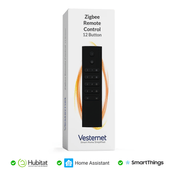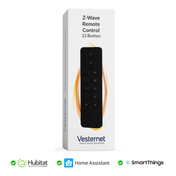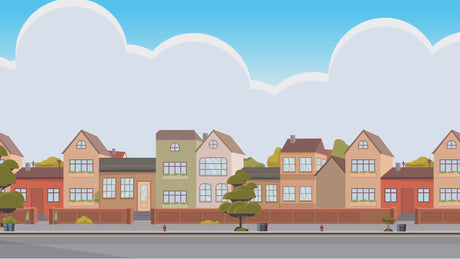In today's rapidly evolving digital landscape, the concept of home automation has transcended from science fiction to everyday reality. Among the most transformative aspects of smart home technology, intelligent lighting systems stand out as both accessible and profoundly impactful. Smart home lighting design represents far more than simply replacing traditional bulbs with connected alternatives; it embodies a comprehensive approach to creating personalised environments that adapt to our daily rhythms, enhance our well-being, and significantly reduce energy consumption.
The integration of automated lighting systems into modern homes has revolutionised how we interact with our living spaces. These sophisticated systems learn from our behaviours, anticipate our needs, and create atmospheric conditions that support everything from productivity and relaxation to security and energy efficiency. As we delve into the intricacies of smart lighting design, we'll explore how these technologies can transform any home into a responsive, intelligent environment that perfectly balances functionality with ambiance.
The journey towards creating the perfect lighting ambiance through automation involves understanding not only the technical capabilities of modern smart lighting systems but also the fundamental principles of lighting design that have guided interior designers and architects for decades. By combining traditional design wisdom with cutting-edge technology, homeowners can achieve lighting solutions that are both aesthetically pleasing and remarkably functional.
Understanding Smart Lighting Technology and Its Core Components
Smart lighting technology represents a sophisticated ecosystem of interconnected devices that communicate seamlessly through your home's wireless network. At its foundation, these systems incorporate advanced sensors, automated controls, and user-friendly interfaces that work in harmony to optimise your lighting experience. The magic happens when these components collaborate to adjust illumination based on real-time conditions, making intelligent decisions about when and how to light your spaces.
The core components of a smart lighting system include intelligent bulbs equipped with LED technology, wireless communication protocols, motion sensors for detecting occupancy and ambient light levels, and centralised control hubs that coordinate the entire network. Modern smart bulbs utilise LED technology not only for energy efficiency but also for their ability to produce a wide spectrum of colours and adjustable colour temperatures, ranging from warm, cosy tones to bright, energising daylight.
Communication protocols form the backbone of smart lighting systems, with technologies such as Wi-Fi, Zigbee, Z-Wave, and the emerging Matter protocol ensuring reliable connectivity between devices. The Matter protocol, developed by the Connectivity Standards Alliance, represents a significant advancement in smart home interoperability, creating a unified standard that ensures compatibility across different brands and platforms. This development means homeowners can mix and match devices from various manufacturers without worrying about compatibility issues.
Advanced connectivity options have expanded significantly, with Wi-Fi 6 and 5G technologies improving the performance and reliability of smart lighting systems. These enhanced connectivity solutions offer faster data transfer rates, lower latency, and better coverage, ensuring that lighting systems operate smoothly even in large or densely populated areas. The integration of these technologies creates a robust foundation for sophisticated lighting automation that responds instantly to user commands and environmental changes.
Sensors play a crucial role in creating truly intelligent lighting systems. Motion sensors detect occupancy and automatically adjust lighting accordingly, whilst ambient light sensors measure natural light levels to optimise artificial lighting throughout the day. Advanced systems incorporate multiple sensor types, including temperature sensors and even sound detection, to create comprehensive environmental awareness that informs lighting decisions.
The Science of Ambiance: How Lighting Affects Mood and Well-being
The relationship between lighting and human psychology runs far deeper than simple visibility. Scientific research has consistently demonstrated that lighting conditions profoundly influence our circadian rhythms, mood states, productivity levels, and overall well-being. Understanding these connections is essential for creating smart lighting designs that truly enhance our daily lives.
Human-centric lighting (HCL) represents a revolutionary approach that supports the human circadian rhythm and improves overall well-being. By mimicking natural light patterns throughout the day, HCL systems can enhance mood, boost productivity, and improve sleep quality. Smart lighting systems with HCL capabilities automatically adjust colour temperature and intensity throughout the day to align with the body's natural rhythms, creating an environment that supports optimal health and performance.
The colour temperature of light, measured in Kelvin, plays a particularly significant role in influencing our physiological responses. Cool light with higher colour temperatures (5000K-6500K) promotes alertness and concentration, making it ideal for workspaces and morning routines. Conversely, warm light with lower colour temperatures (2700K-3000K) encourages relaxation and prepares the body for rest, perfect for evening activities and bedtime routines.
Brightness levels, or illuminance, work in conjunction with colour temperature to create specific atmospheric conditions. Dynamic lighting systems can gradually adjust both parameters throughout the day, creating seamless transitions that support natural biological processes. For instance, a smart lighting system might begin the day with gradually increasing brightness and cool colour temperatures to simulate sunrise, then transition to warmer, dimmer lighting in the evening to promote relaxation and prepare for sleep.
The psychological impact of lighting extends beyond circadian rhythm regulation to influence emotional states and cognitive performance. Proper lighting can reduce eye strain, minimise fatigue, and create environments that support specific activities. Task lighting provides focused illumination for detailed work, ambient lighting creates overall room illumination, and accent lighting highlights architectural features or decorative elements, each serving distinct psychological and functional purposes.
Research in environmental psychology has shown that individuals have greater control over their lighting environment experience improved satisfaction, reduced stress levels, and enhanced overall quality of life. Smart lighting systems provide unprecedented control over these environmental factors, allowing users to create personalised lighting scenes that support their individual preferences and activities throughout the day.
Energy Efficiency and Environmental Benefits of Smart Lighting Systems
The environmental and economic advantages of smart lighting systems extend far beyond simple energy savings, representing a comprehensive approach to sustainable living that benefits both homeowners and the broader environment. The sophisticated energy management features of these systems minimise unnecessary power usage, directly translating to lower greenhouse gas emissions and reduced environmental impact.
LED technology forms the foundation of energy-efficient smart lighting, consuming up to 80% less energy than traditional incandescent bulbs whilst lasting 25 times longer. When combined with intelligent automation features, these savings multiply significantly. Smart lighting systems equipped with energy-efficient LED bulbs continuously adjust based on environmental factors and user behaviour, creating adaptive efficiency that traditional lighting simply cannot match.
Automated scheduling represents one of the most effective energy-saving features of smart lighting systems. These systems can synchronise perfectly with daily routines, programming lights to gradually brighten during wake-up periods, automatically dim in the evening, and turn off completely when spaces are unoccupied. This intelligent scheduling ensures that lights never remain on unnecessarily, leading to substantial energy savings without compromising comfort or convenience.
Motion and occupancy sensors take energy efficiency to the next level by eliminating human error in lighting management. These sophisticated sensors can distinguish between brief passersby and sustained occupancy, ensuring optimal lighting management that maximises energy-saving potential. In spaces like hallways, bathrooms, or garages where lights often remain on unintentionally, motion sensors provide automatic control that can reduce energy consumption by 30-50%. Additionally, smart plug switches can extend automation to table lamps and other plug-in lighting fixtures, whilst energy monitoring devices provide detailed insights into power consumption patterns.
Dimming and brightness control capabilities revolutionise how we think about lighting efficiency. Smart systems automatically adjust brightness levels based on available natural light, time of day, and specific room activities. This dynamic control ensures optimal energy usage whilst maintaining perfect illumination for every task and mood. Studies have shown that dimming lights by just 10% can result in energy savings of approximately 10%, with greater dimming levels providing proportionally larger savings.
Remote monitoring and control capabilities enable homeowners to track energy consumption in real-time, providing valuable insights into usage patterns and opportunities for further optimisation. Many smart lighting systems provide detailed energy reports that help users understand their consumption patterns and make informed decisions about their lighting usage.
The financial benefits of smart lighting systems prove equally impressive, with many homeowners experiencing significant reductions in their electricity bills after implementation. The initial investment in smart lighting technology typically pays for itself within 2-3 years through consistent monthly savings on energy costs, after which the systems continue to provide ongoing financial benefits throughout their extended operational life.
Solar-powered smart lighting solutions represent the cutting edge of sustainable lighting technology, particularly for outdoor and security applications. These systems harness solar energy during the day and store it in batteries for night-time use, reducing reliance on grid electricity and further minimising environmental impact. Energy harvesting technologies, including kinetic and thermal energy harvesting, are being integrated into smart lighting systems to capture and convert ambient energy into electrical power, enhancing overall system efficiency.
Design Principles for Creating Perfect Lighting Ambiance
Creating the perfect lighting ambiance requires a thoughtful blend of technical knowledge, design principles, and personal preferences. Successful smart lighting design goes beyond simply installing connected bulbs; it involves understanding how different lighting techniques work together to create cohesive, functional, and beautiful environments that enhance daily life.
The fundamental principle of layered lighting forms the cornerstone of effective lighting design. This approach combines three distinct types of lighting: ambient lighting provides general illumination for overall visibility, task lighting offers focused light for specific activities, and accent lighting highlights architectural features, artwork, or decorative elements. Smart lighting systems excel at managing these layers dynamically, adjusting each type independently to create the perfect balance for any situation.
Ambient lighting serves as the foundation layer, providing comfortable general illumination throughout a space. In smart lighting systems, ambient lighting can be automatically adjusted based on time of day, natural light levels, and occupancy patterns. This base layer should provide even, shadow-free illumination that allows for safe movement and general activities whilst creating a welcoming atmosphere.
Task lighting addresses specific functional needs, providing focused illumination for activities such as reading, cooking, working, or grooming. Smart task lighting can be programmed to activate automatically when motion is detected in specific areas or can be controlled through voice commands or mobile applications. Modern smart switches and dimmer modules provide precise control over task lighting, allowing users to create optimal illumination levels for any activity. The key to effective task lighting lies in positioning light sources to minimise shadows and glare whilst providing adequate illumination levels for the intended activities.
Accent lighting adds drama, visual interest, and personality to spaces by highlighting specific features or creating focal points. Smart accent lighting can be programmed to create dynamic scenes that change throughout the day or in response to different activities. This might include highlighting artwork during evening entertainment, illuminating architectural details during dinner parties, or creating subtle pathway lighting for night-time navigation.
Colour temperature progression throughout the day represents a crucial aspect of smart lighting design that supports natural circadian rhythms. Morning lighting should begin with warm tones that gradually shift to cooler, more energising temperatures during peak activity hours, then return to warm, relaxing tones in the evening. This progression can be automated to occur seamlessly without user intervention, creating a natural lighting environment that supports optimal health and well-being.
Zoning strategies allow different areas of the home to have independent lighting control, enabling personalised lighting experiences that match the specific functions and preferences of each space. Living areas might emphasise comfort and relaxation with warm, dimmable lighting, whilst home offices require bright, cool lighting that promotes focus and productivity. Bedrooms benefit from gentle, warm lighting that supports relaxation and sleep preparation.
Integration with architectural features enhances the overall design impact of smart lighting systems. Cove lighting can provide indirect ambient illumination that creates a sense of spaciousness, whilst under-cabinet lighting in kitchens provides both functional task lighting and attractive accent lighting. Smart systems can coordinate these different architectural lighting elements to create cohesive lighting scenes that enhance the home's design aesthetic.
Advanced Automation Features and Personalisation Options
The true power of smart lighting systems lies in their advanced automation capabilities and extensive personalisation options. These features transform static lighting installations into dynamic, responsive environments that adapt to individual preferences, daily routines, and changing needs throughout the day and seasons.
Artificial Intelligence and Machine Learning integration represents the cutting edge of smart lighting technology. These systems learn from user behaviour patterns, automatically adjusting lighting preferences based on historical data and usage patterns. Over time, AI-driven lighting systems become increasingly personalised, anticipating user needs and creating optimal lighting conditions without manual intervention.
Personalised lighting scenes allow users to create custom lighting configurations for different activities and moods. A "Movie Night" scene might dim all lights except for subtle accent lighting, whilst a "Dinner Party" scene could create warm, inviting illumination that encourages conversation and relaxation. "Wake Up" scenes can gradually increase brightness and shift colour temperature to simulate natural sunrise, providing a gentle and natural way to begin the day. Wall-mounted scene controllers make it easy to activate these preset configurations with a single button press.
Voice control integration with virtual assistants such as Amazon Alexa, Google Assistant, and Apple Siri has become a standard feature in modern smart lighting systems. Users can control their lights using simple voice commands, making it convenient to adjust lighting settings without needing physical switches or mobile applications. Advanced voice control can understand complex commands such as "Set the living room to 30% brightness with warm white light" or "Turn on movie mode in the basement."
Geofencing capabilities enable lighting systems to respond automatically to the homeowner's location. Lights can turn on automatically when residents approach the home and turn off when everyone leaves, providing both convenience and energy savings. Advanced geofencing can even adjust lighting based on the time of arrival, creating appropriate lighting scenes for different times of day.
Integration with other smart home systems creates comprehensive automation scenarios that extend beyond lighting alone. Smart lighting can coordinate with security systems to create the appearance of occupancy when residents are away, work with climate control systems to optimise energy usage, and integrate with entertainment systems to create immersive experiences that combine lighting, audio, and visual elements.
Seasonal and weather-based adjustments allow smart lighting systems to compensate for changing natural light conditions throughout the year. During shorter winter days, systems can provide additional illumination to combat seasonal affective disorder, whilst summer programming might emphasise energy savings during peak demand periods.
Advanced scheduling capabilities go beyond simple on/off timers to create complex lighting programmes that vary throughout the week, month, or year. Weekend schedules might differ from weekday routines, holiday programming can create special lighting effects for celebrations, and vacation modes can simulate normal occupancy patterns for security purposes.
Predictive maintenance features utilise machine learning algorithms to predict when light bulbs or fixtures are likely to fail, allowing for proactive maintenance that prevents unexpected outages. This capability is particularly valuable in commercial settings but also provides convenience and peace of mind for residential users.
Implementation Strategies and Practical Installation Considerations
Successfully implementing a smart lighting system requires careful planning, strategic decision-making, and attention to both technical and practical considerations. The implementation process involves evaluating existing infrastructure, selecting appropriate technologies, and developing a phased installation approach that minimises disruption whilst maximising benefits.
Assessment of existing electrical infrastructure forms the crucial first step in smart lighting implementation. Older homes may require electrical upgrades to support modern smart lighting systems, particularly if they lack neutral wires in switch boxes or have outdated electrical panels. Professional electrical assessment ensures that the home's infrastructure can safely and reliably support smart lighting technology.
Technology selection involves choosing between different communication protocols, device manufacturers, and system architectures. Wi-Fi-based systems offer simplicity and broad compatibility but may strain home networks with many devices. Zigbee and Z-Wave systems require dedicated hubs but provide more reliable mesh networking and better battery life for battery-powered devices. The emerging Matter protocol promises to simplify these decisions by ensuring interoperability across different technologies.
Phased implementation strategies allow homeowners to gradually build their smart lighting systems over time, spreading costs and learning opportunities across multiple phases. A typical implementation might begin with high-impact areas such as main living spaces and primary bedrooms, then expand to include secondary areas, outdoor lighting, and advanced automation features.
Professional installation considerations become particularly important for complex installations involving hardwired switches, dimmer controls, and integrated architectural lighting. Whilst many smart bulbs can be installed by homeowners, comprehensive smart lighting systems often benefit from professional installation to ensure optimal performance, safety, and integration with existing electrical systems.
Network infrastructure requirements must be carefully considered, particularly for Wi-Fi-based systems that may require robust wireless coverage throughout the home. Mesh networking solutions or wireless access point installations may be necessary to ensure reliable connectivity for all smart lighting devices.
User training and familiarisation represent often-overlooked aspects of successful smart lighting implementation. Family members need to understand how to use voice controls, mobile applications, and backup manual controls to fully benefit from smart lighting capabilities. Comprehensive user education ensures that all household members can effectively utilise the system's features.
Maintenance and update procedures should be established from the beginning, including regular software updates, battery replacement schedules for wireless devices, and periodic system optimisation. Many smart lighting systems provide automatic updates, but users should understand how to monitor system health and address any issues that arise.
Integration planning considers how smart lighting will work with other home automation systems, both current and future. Establishing a comprehensive smart home strategy from the beginning ensures that lighting systems can seamlessly integrate with security systems, climate control, entertainment systems, and other automated technologies.
Future Trends and Emerging Technologies in Smart Lighting
The smart lighting industry continues to evolve rapidly, with emerging technologies and innovative applications pushing the boundaries of what's possible in home lighting automation. Understanding these trends helps homeowners make informed decisions about current investments whilst preparing for future technological developments.
Integration with Augmented Reality (AR) and Virtual Reality (VR) technologies represents an exciting frontier for smart lighting applications. These systems can enhance AR and VR experiences by providing dynamic and responsive lighting that adapts to virtual environments. This integration proves particularly valuable for gaming, training simulations, and virtual tours, creating immersive experiences that blur the lines between physical and digital environments.
Quantum Dot and OLED technologies are poised to revolutionise smart lighting by offering superior colour accuracy, energy efficiency, and design flexibility. These advanced technologies enable the creation of ultra-thin, flexible, and transparent lighting panels that can be integrated into various surfaces and objects, opening up entirely new possibilities for lighting design and architectural integration.
Li-Fi (Light Fidelity) technology represents a groundbreaking development that uses LED lights to transmit data, potentially transforming smart lighting systems into high-speed internet access points. This technology could eliminate the need for separate Wi-Fi networks whilst providing secure, high-speed data transmission through existing lighting infrastructure.
Advanced sensor integration continues to expand the capabilities of smart lighting systems. Future systems may incorporate air quality sensors, biometric monitoring, and even health tracking capabilities that adjust lighting based on physiological indicators such as heart rate, stress levels, or sleep patterns. Temperature and humidity sensors can already work in conjunction with lighting systems to create optimal environmental conditions that support both comfort and energy efficiency.
Artificial Intelligence capabilities are becoming increasingly sophisticated, with future systems expected to provide even more personalised and predictive lighting experiences. These AI systems may learn not only from individual user behaviour but also from broader usage patterns, weather data, and seasonal trends to create optimal lighting conditions automatically.
Smart city integration represents a broader trend that extends smart lighting beyond individual homes to entire urban environments. These systems can coordinate with traffic management, public safety, and environmental monitoring systems to create comprehensive urban lighting solutions that enhance efficiency, safety, and quality of life for entire communities.
Sustainability innovations continue to drive development in smart lighting technology, with new energy harvesting methods, improved battery technologies, and enhanced energy efficiency features. Future systems may achieve complete energy independence through advanced solar integration and energy storage capabilities.
Biometric integration may enable lighting systems to respond to individual users automatically, adjusting preferences based on facial recognition, voice patterns, or other biometric identifiers. This technology could create truly personalised lighting experiences that adapt automatically when different family members enter a room.
Conclusion: Illuminating the Path Forward
Smart home lighting design represents far more than a technological upgrade; it embodies a fundamental shift towards more responsive, efficient, and personalised living environments. The integration of intelligent lighting systems into modern homes offers unprecedented opportunities to enhance comfort, reduce energy consumption, and create atmospheric conditions that support our daily activities and overall well-being.
The journey towards perfect lighting ambiance through automation requires understanding both the technical capabilities of modern systems and the fundamental principles of effective lighting design. By combining traditional design wisdom with cutting-edge technology, homeowners can create lighting solutions that are both aesthetically pleasing and remarkably functional.
The benefits of smart lighting systems extend across multiple dimensions, from significant energy savings and environmental benefits to enhanced security, convenience, and quality of life. These systems learn from our behaviours, adapt to our preferences, and create environments that support our natural rhythms and activities throughout the day.
As we look towards the future, emerging technologies promise even greater capabilities and integration possibilities. From AI-driven personalisation to advanced sensor integration and sustainable energy solutions, the evolution of smart lighting technology continues to expand the possibilities for creating perfect lighting environments.
The implementation of smart lighting systems requires careful planning and consideration of both technical and practical factors. However, the long-term benefits in terms of energy savings, convenience, and enhanced living experiences make these systems an increasingly attractive investment for homeowners seeking to create more intelligent, responsive, and sustainable living environments.
Ultimately, smart home lighting design offers the opportunity to transform our relationship with our living spaces, creating environments that not only respond to our immediate needs but also anticipate and support our long-term well-being. As these technologies continue to evolve and become more accessible, the vision of truly intelligent, adaptive lighting systems that enhance every aspect of our daily lives moves ever closer to reality.


















